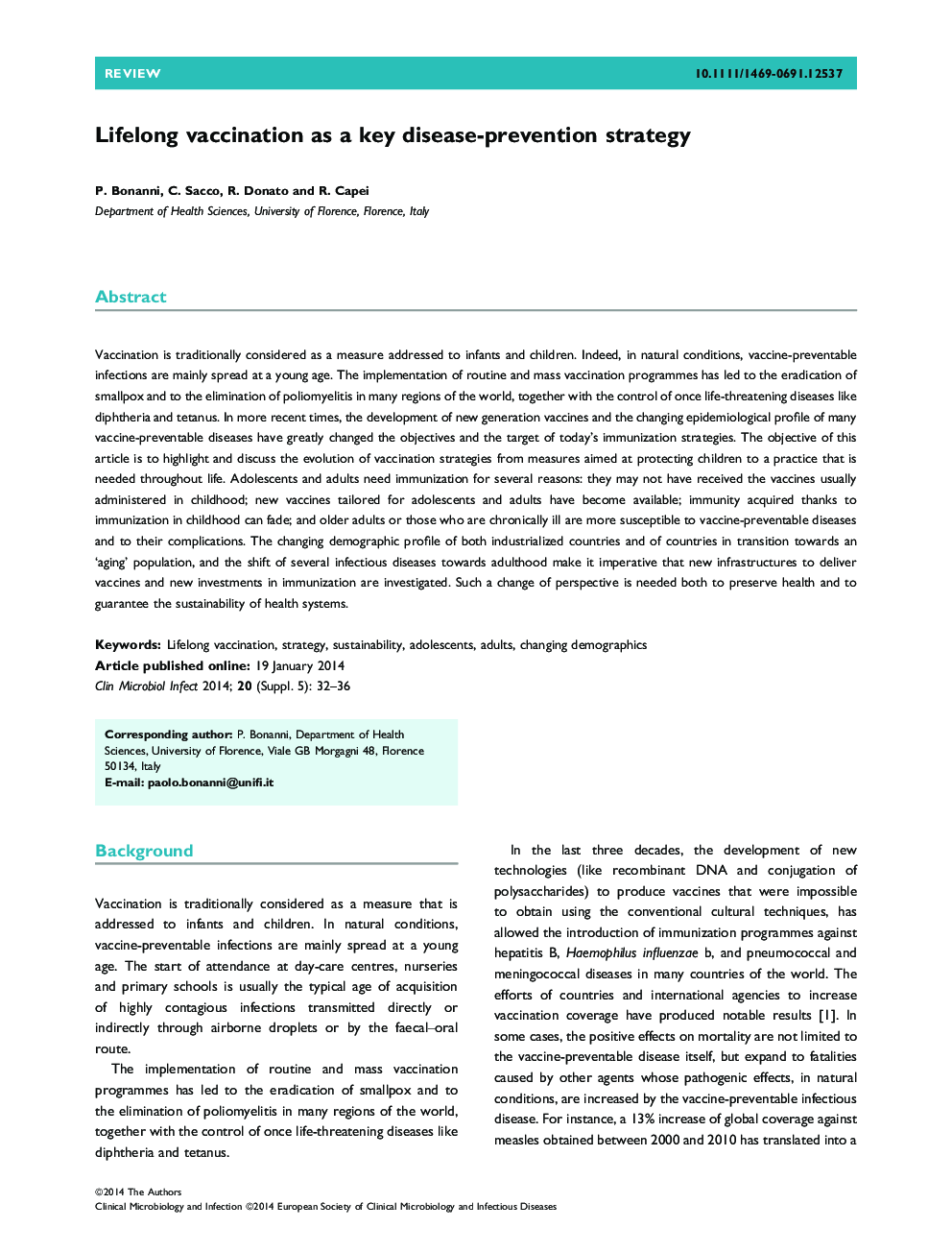| Article ID | Journal | Published Year | Pages | File Type |
|---|---|---|---|---|
| 3396690 | Clinical Microbiology and Infection | 2014 | 5 Pages |
Vaccination is traditionally considered as a measure addressed to infants and children. Indeed, in natural conditions, vaccine-preventable infections are mainly spread at a young age. The implementation of routine and mass vaccination programmes has led to the eradication of smallpox and to the elimination of poliomyelitis in many regions of the world, together with the control of once life-threatening diseases like diphtheria and tetanus. In more recent times, the development of new generation vaccines and the changing epidemiological profile of many vaccine-preventable diseases have greatly changed the objectives and the target of today’s immunization strategies. The objective of this article is to highlight and discuss the evolution of vaccination strategies from measures aimed at protecting children to a practice that is needed throughout life. Adolescents and adults need immunization for several reasons: they may not have received the vaccines usually administered in childhood; new vaccines tailored for adolescents and adults have become available; immunity acquired thanks to immunization in childhood can fade; and older adults or those who are chronically ill are more susceptible to vaccine-preventable diseases and to their complications. The changing demographic profile of both industrialized countries and of countries in transition towards an ‘aging’ population, and the shift of several infectious diseases towards adulthood make it imperative that new infrastructures to deliver vaccines and new investments in immunization are investigated. Such a change of perspective is needed both to preserve health and to guarantee the sustainability of health systems.
